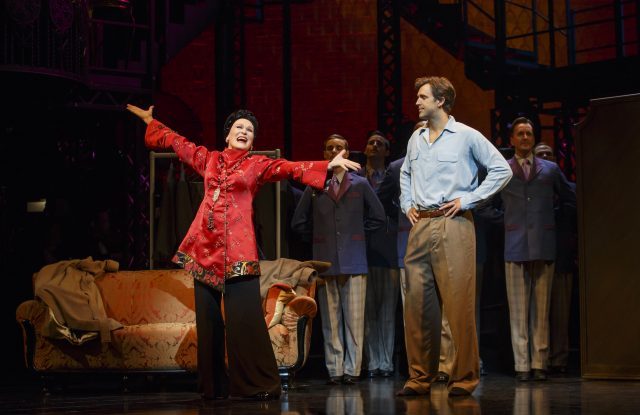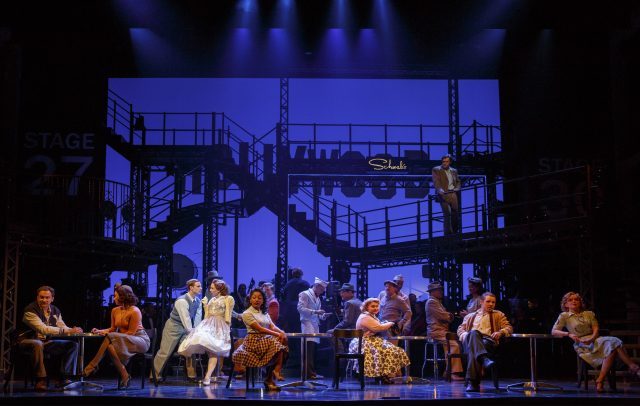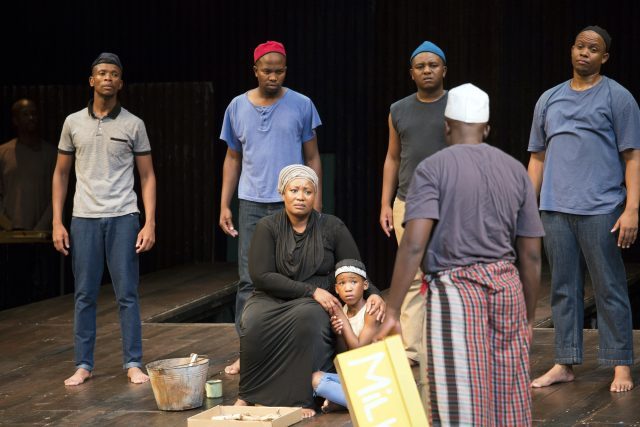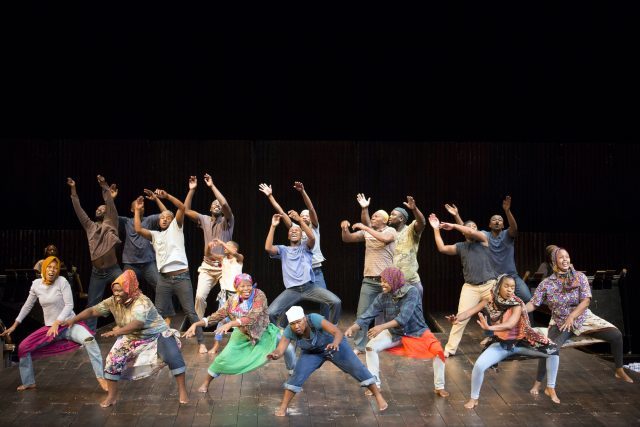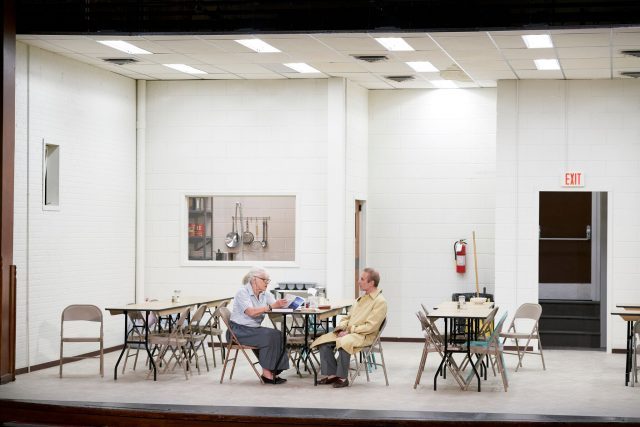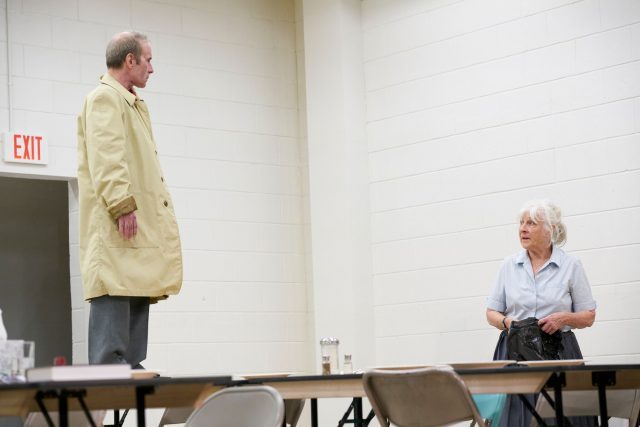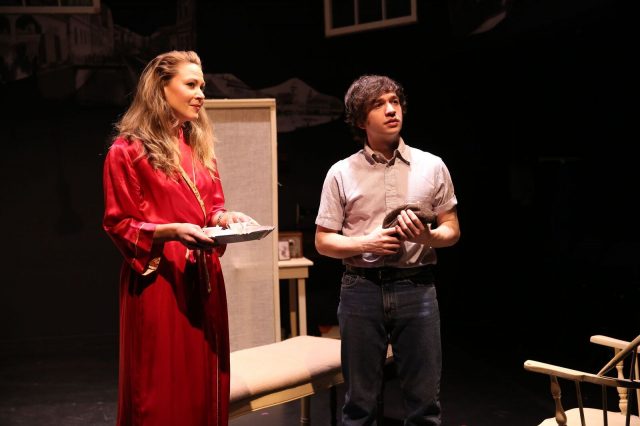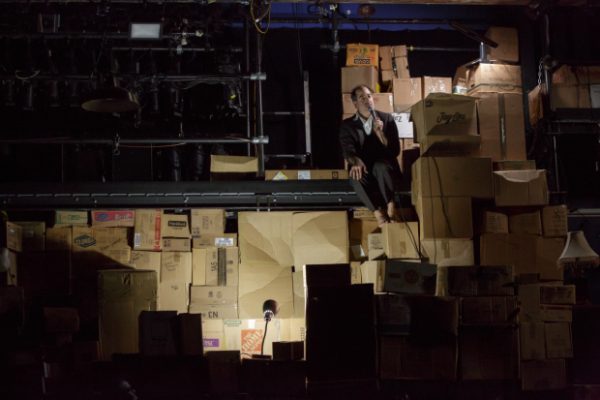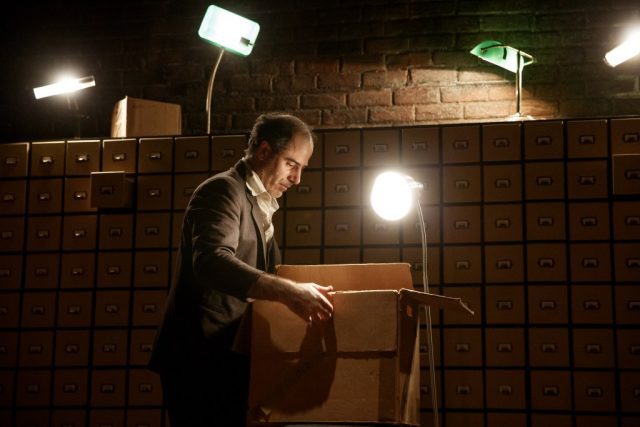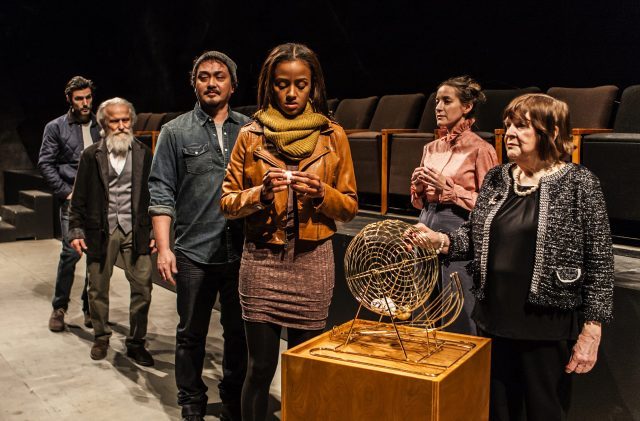
Branden Jacobs-Jenkins’s EVERYBODY is an ingenious look at life, death, and the theater itself (photo © 2017 Monique Carboni)
The Pershing Square Signature Center
The Irene Diamond Stage
480 West 42nd St. between Tenth & Eleventh Aves.
Tuesday-Sunday through March 19, $30 through March 12, $40 after
212-244-7529
www.signaturetheatre.org
Branden Jacobs-Jenkins’s endlessly inventive Everybody is a magical, mysterious theatrical experience that is a must-see for adventurous theatergoers who relish being challenged over and over again. Rising stars Jacobs-Jenkins (An Octoroon, War, Gloria) and director Lila Neugebauer (The Wayside Motor Inn, The Wolves) explore love and death, dreams and reality, the fear of G-d, the human need for companionship, and the value of each individual life in the ninety-minute play, which opened last night at the Signature Theater’s Irene Diamond Stage for an extended run through March 19. The less you know about Everybody, the more surprises are in store, and the Signature is helping out in several ways. The wall outside the theater, which is usually bedecked with wide-ranging information about whatever play is being performed inside, putting it into sociohistorical context, only contains reproductions of paintings about death by such artists as Rubens and Breugel the Elder, and the audience doesn’t receive a program until the show is over. What we do know and can say, without giving anything away, is that Everybody is an adaptation of the late-fifteenth-century morality/mortality play Everyman, which was an English translation of the Dutch Elckerlijc, which was inspired by a Buddhist fable. At each performance, five members of the cast — Brooke Bloom, Michael Braun, Louis Cancelmi, David Patrick Kelly, and Lakisha Michelle May — line up to find out which abstract, conceptual character they will play, so each show is very different. The wonderfully cheeky Marylouise Burke is always Death, while the terrifically energetic Jocelyn Bioh is always G-d. (The excellent cast also includes Lilyana Tiare Cornell and Chris Perfetti.) “How can it be / that of all my productions, / it is you who have deteriorated / so severely, so vastly disappointing? / And don’t you hear the remainder of my creation, / the wonder that is everything, / crying out for justice against you?” G-d declares early on. To paraphrase Shakespeare, the world is indeed a stage, and we men, women, and children are merely players, with only so much time to justify our existence and get our things in order.
Laura Jellinek’s set is just about as basic as it comes, although with a major twist, consisting of eighteen chairs, the same kind that ticket holders sit in, lined up on a narrow section of the stage in front of a dark wall, blurring the line between audience and performer. Every so often Matt Frey’s lighting goes pitch black and Brandon Wolcott’s sound design takes over as voices are heard throughout the theater; keep your eyes and ears ready, because just about anything can happen anywhere and with anyone as the surprises keep mounting. The second of three works that will make up Jacobs-Jenkins’s Residency Five stay at the Signature (following 2014’s Appropriate), Everybody is an ingenious piece of theater that is involving from the moment you step inside the Irene Diamond. Incorporating splashes of Brecht and Beckett, Jacobs-Jenkins delves into topics that will have you taking a good, long look at yourself, regardless of whether you believe in G-d and the afterlife. You’re also likely to want to go back and see the allegorical show again; there are 120 variations of actors and roles, and the emotional resonance is sure to be very different depending on who gets cast as whom; on any night the main character may be a young woman or an old man. Regardless, just keep your faith in Jacobs-Jenkins and Neugebauer, who take you on quite an existential journey; when the play’s over, facing its own demise, it will of course rise again, living on in more performances and in the memories of those who have experienced it. The Signature has scheduled numerous special events in conjunction with Everybody, including talkbacks with members of the cast and crew after the February 23, 28, and March 7 performances, a Backstage Pass talk with Jellinek before the March 2 show, and a book club gathering on March 16 discussing Paul Kalanithi’s memoir, When Breath Becomes Air, which asks the question, “What makes human life meaningful?”
